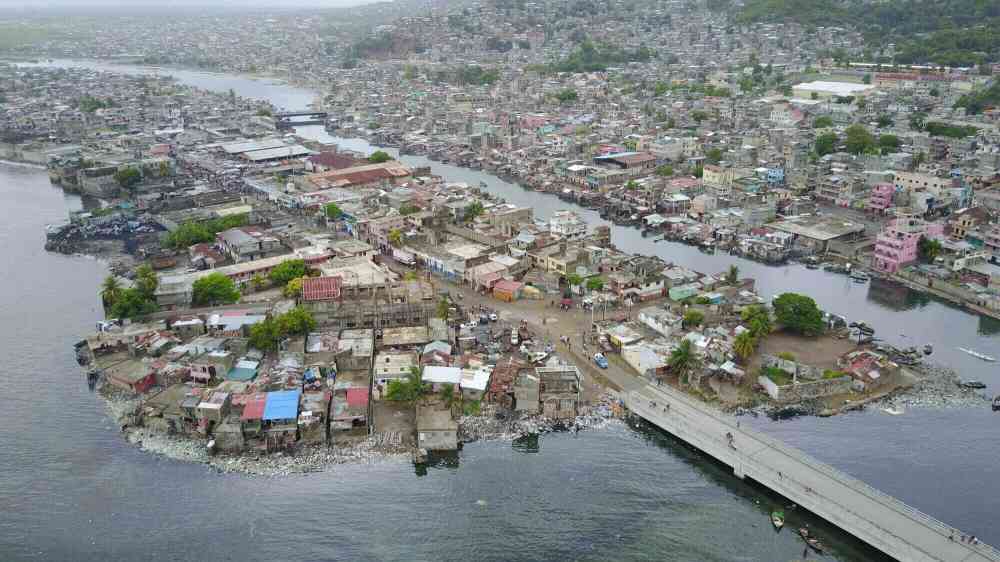Are we ready to respond to an earthquake, a tropical storm, an epidemic outbreak, and a cyber-attack at once?

As odd as it may sound, an earthquake, a tropical storm, an epidemic outbreak, and a cyber-attack occurred in Panama in June 2023 as the scenario for an emergency drill. The Third Regional Drill of Disaster Response and Humanitarian Aid took place in the country and included – for the first time – a Disaster Risk Financing component as a core element of preparedness and response capacities in Central America to respond to highly-devastating events.
The regional exercise organized by the Central American Integration System’s Coordination Center for Disaster Prevention in Central America and the Dominican Republic included a financial response simulation conducted by the Ministry of Economy and Finance of Panama (MEF) and the World Bank Disaster Risk Management team. This reflects the increasing importance that Central American countries are placing on Disaster Risk Financial Management (DRFM).
Given the region’s exposure to multiple hazards, there is a wide agreement that sound DRFM is critical to ensure an effective emergency response and fiscal resilience to disaster risk. El Salvador, Honduras, and Nicaragua appear among the ten countries in the World with the highest level of average annual losses due to disasters as a percentage of their Gross Domestic Product (GDP) for the 1998-2017 period.
The cost of a disaster
More recently, the region has been affected by the occurrence of tropical storm Julia and hurricane Fiona in 2022. In 2020, while dealing with the COVID-19 pandemic, the region was impacted by four extreme hydrometeorological events : storms Amanda and Cristobal and hurricanes Eta and Iota. These events meant significant contractions in the Central American countries’ GDP. The magnitude of damages and losses can be exemplified by the estimated US$2,900 million caused by Amanda and Cristobal in the context of COVID-19 in El Salvador and US$2,207 million by Eta and Iota in Honduras.
Damages and losses and the indirect effects of disasters remain and accumulate over time, and it is expected that the manifestations of Climate Change will increase the complexity of disaster exposure and vulnerability profiles throughout the region.
The timeliness of resource mobilization efforts after a disaster occurs and the efficiency in the allocation and execution of those resources for emergency response and rehabilitation activities is highly dependent on the existing DRFM capacities and institutional arrangements.
The most important development objective pursued with enhanced DRFM capacities is to minimize the impacts of disasters on the economies and the well-being of the populations while ensuring fiscal sustainability.
With the support and technical assistance of the World Bank, all the Central American countries have developed and adopted comprehensive DRFM strategies as policy roadmaps and strengthened their preparedness and response capacities , supporting institutional developments in a wide range of issues such as:
- The adoption of tools to accurately and timely assess the impact of a disaster.
- Mechanisms for the identification and characterization of disaster-related contingent liabilities.
- The acquisition of multi-layered financial instruments such as contingent credit lines, emergency response components under-investment financing projects, and sovereign parametric insurance policies to secure financing for emergency response, rehabilitation, and reconstruction needs.
An earthquake, a tropical storm, a bird flu outbreak, and a cyber-attack in one country
The financial response scenario in the Regional Disaster Response Drill recently held in Panama represents another innovative milestone in DRFM capacity building in the region. Under the leadership of the Directorate for Investments, Concessions and State Risks (DICRE), and within the country´s DRFM Strategic Framework, sixteen government officials from public financing, budget, treasury, public investment, and territorial management units of MEF, participated in a simulation exercise. The focus was the financial response to the concurrent event of a 7.5-degree earthquake, a country-wide tropical storm, an outbreak of bird flu, and a cyber-attack on the financial system.
Beginning with the simulated National Declaration of a State of Emergency, participants were asked to do three things. First, they were to classify sectorial and institutional financing requirements based on an ad-hoc damage and loss assessment provided by the United Nations Development Programme, then they had to analyze the fiscal space and financial mechanisms available under Panama’s public financial management framework.
Finally, they had to assess the resource mobilization capacity from pre-acquired DRF instruments. Two of them were a Development Policy Loan with a Deferred Drawdown Option for Catastrophe risks with the World Bank, Contingent Credit Lines with the Inter-American Development Bank, and the excess rainfall parametric insurance policy from the Caribbean Catastrophe Risk Insurance Facility (CCRIF SPC).
Three lessons learned to improve Disaster Risk Management in Central America
- Ministries of Finance play a critical role in emergencies when coordinated with disaster risk management (DRM) entities. Close coordination between the government agencies in charge of emergency response, rehabilitation, and reconstruction processes with the entity in charge of resource mobilization and allocation results in a more efficient and effective emergency response.
- Knowledge dissemination and training are key. In addition to building capacities, the exercise also served to identify opportunities and needs in terms of disseminating knowledge and providing further training to MEF officials to explore new financial instruments and strengthen and operate the National Financial DRM Framework.
- Partnerships are central to developing policies and planning in the region. Observers from national, international, and regional organizations identified opportunities to organize similar regional and national-level simulation exercises, leveraging regional entities and the strategic alliance built with international cooperation partners for the promotion of DRM.